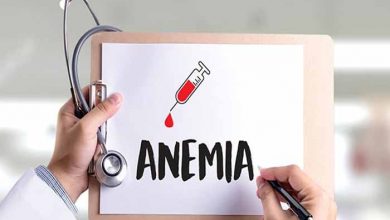What Is Razor Burn?

• Symptoms
• Causes
• Diagnosis
• Jump to More Topics
Most people have had the unpleasant experience of razor burn at some point in their lives. Razor burn is skin irritation that occurs while shaving your face, legs, or other body parts to remove unwanted hair. The interaction between the blade, hair, and skin is what causes razor burn.
Razor burn occurs in both men and women, and it can last anywhere from a few hours to a few days, depending on how severe it is. People with sensitive skin may be more susceptible to razor burn.
Signs and Symptoms of Razor Burn
Symptoms of razor burn may include:
• Red bumps
• A rash
• Stinging
Most likely, it will look like red, irritated patches of skin.
Causes and Risk Factors of Razor Burn
“Razor burn is caused by trauma from your razor blade while shaving,” says Joshua Zeichner, MD, an associate professor of dermatology and the director of cosmetic and clinical research at Mount Sinai Hospital in New York City. “As the razor blades move over the skin, they can disrupt the outer skin layer, leading to microscopic cracks, loss of hydration, and inflammation.” This translates to the red, itchy rash you may experience.
Not using shaving cream or gel, or other products with emollients, may also lead to razor burn. Emollients layer the skin with a protective film that traps in moisture and prevents inflammation.
How Is Razor Burn Diagnosed?
If you experience an uncomfortable, red rash after shaving that doesn’t go away on its own, see a dermatologist who can determine if you have razor burn. “Razor burn is a clinical diagnosis based on the location of the rash, history of prior shaving, and characteristic red, irritated patches of skin,” explains Dr. Zeichner.
Duration of Razor Burn
Razor burn can last anywhere from hours to days depending on how severe it is, says Zeichner. To speed up healing, stop shaving until your symptoms dissipate.
Treatment and Medication Options for Razor Burn
When it comes to treating razor burn, you have a few options, says Zeichner. You can:
• Apply gentle moisturizers to hydrate and repair the skin barrier.
• Use an over-the-counter 1 percent hydrocortisone cream to reduce inflammation. It can be used twice daily for one to two weeks.
If your razor burn doesn’t improve in a few weeks, visit a board-certified dermatologist, who can evaluate your skin and recommend a proper course of treatment.
Prevention of Razor Burn
Proper shaving technique can minimize your chances of developing razor burn. Here’s how to get a smooth, irritation-free shave:
• Moisten skin first The best time to shave is after a warm shower while your skin and hair are soft and moist.
• Apply shave cream or gel This will create a barrier between the blade and your skin and enhance the glide of the razor.
• Use single strokes, in the direction of hair growth Do not go over the same area multiple times, and do not go against the grain. You make think that shaving in the opposite direction of hair growth provides a closer shave but it actually leads to irritation.
• Rinse the razor frequently Clean the razor every two to three strokes to remove debris that builds up between the blades. Do not tap the blades against the sink because this can disrupt the specialized polymer coating that is used on most razor blades.
• Moisturize Apply a moisturizing aftershave lotion to help hydrate and repair the skin barrier.
Complications of Razor Burn
• Razor bumps — also known as pseudofolliculitis barbae — can occur in conjunction with razor burn or on its own. Unlike razor burn, which is skin irritation, “razor bumps are ingrown hairs that lead to red bumps and pus pimples,” says Zeichner. “The hair turns back into the skin rather than growing out as it should.”
• Razor bumps are especially common in people with curly hair. To prevent razor bumps, follow the proper shaving technique described above.
• The best way to treat razor bumps is by stopping shaving. If your razor bumps are severe, you can treat them with creams that contain hydrocortisone or tretinoin under supervision by your primary care doctor or dermatologist.





